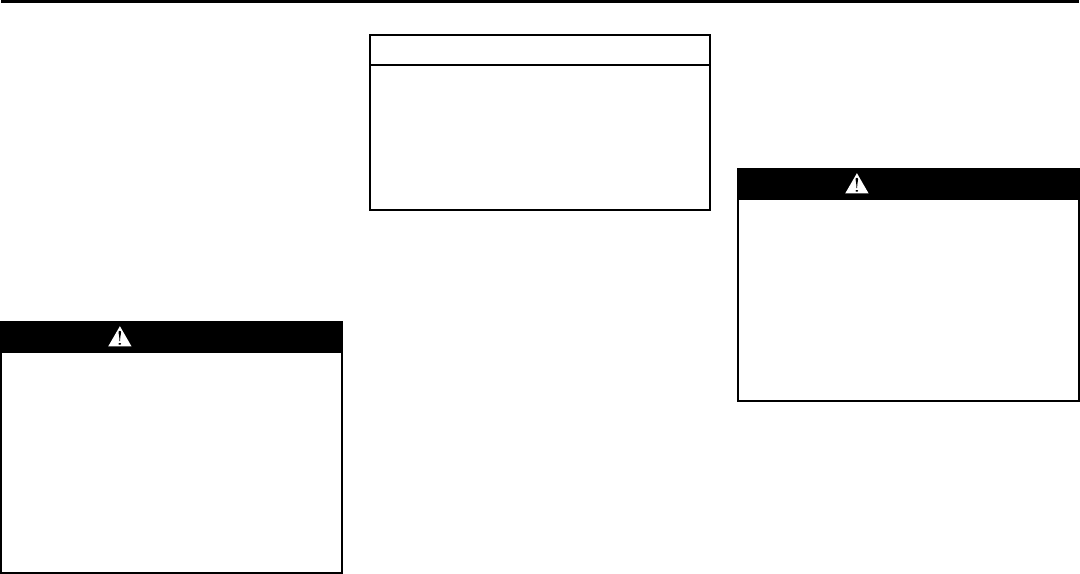
4-16
DRIVING YOUR VEHICLE
78J00-03E
able from the cold. But do it as little as pos-
sible. Preserve the fuel as long as you can.
To help keep warm, you can get out of the
vehicle and do some fairly vigorous exer-
cises every half hour or so until help
comes.
If Your Vehicle is Stuck in Sand,
Mud, Ice, or Snow
In order to free your vehicle when it is
stuck, you will need to spin the wheels, but
you do not want to spin your wheels too
fast. The method known as rocking can
help you get out when you are stuck, but
you must use caution.
For information about using tire chains on
your vehicle, refer to “Tire Chains” in
“Tires” in the “Service and Appearance
Care” section.
Rocking Your Vehicle to Get It Out
First, turn the steering wheel left and right.
That will clear the area around the front
wheels. If your vehicle has traction control,
you should turn the traction control system
off. Refer to “Traction Control System
(TCS)” in this section. Then shift back and
forth between REVERSE (R) and a for-
ward gear, spinning the wheels as little as
possible. Release the accelerator pedal
while you shift, and press lightly on the
accelerator pedal when the transaxle is in
gear. By slowly spinning the wheels in the
forward and reverse directions, you will
cause a rocking motion that may free your
vehicle. If that does not get your vehicle
out after a few tries, it may need to be
towed out. If your vehicle does need to be
towed out, refer to “Towing Your Vehicle”
in this section.
Loading Your Vehicle
It is very important to know how much
weight your vehicle can carry. Two labels
on your vehicle show how much weight it
may properly carry, the Tire and Loading
Information label and the Vehicle Certifica-
tion label.
WARNING
If you let your vehicle’s tires spin at
high speed, they can explode, and
you or others could be injured. And,
the transaxle or other parts of the
vehicle can overheat. That could
cause an engine compartment fire or
other damage. When you are stuck,
spin the wheels as little as possible.
Do not spin the wheels above 35 mph
(55 km/h) as shown on the speedom-
eter.
CAUTION
Spinning the wheels can destroy
parts of your vehicle as well as the
tires. If you spin the wheels too fast
while shifting the transaxle back and
forth, you can destroy the transaxle.
Refer to “Rocking Your Vehicle to
Get It Out” in this section.
WARNING
Do not load your vehicle any heavier
than the Gross Vehicle Weight Rating
(GVWR), or either the maximum front
or rear Gross Axle Weight Rating
(GAWR). If you do, parts on your
vehicle can break, and it can change
the way your vehicle handles. These
could cause you to lose control and
crash. Also, overloading can shorten
the life of your vehicle.


















